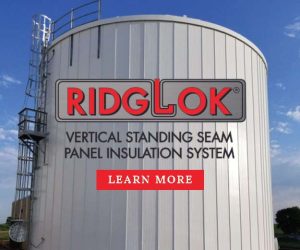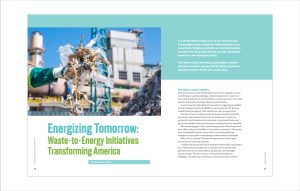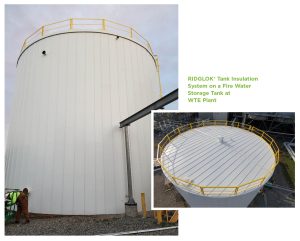Energizing Tomorrow: Waste-to-Energy Initiatives Transforming America

In a world where taking care of our environment is becoming more crucial, the United States is at a crossroads. People worldwide are coming together to tackle big issues like climate change, extending resources, and managing waste.
This article dives into why sustainability matters and how waste-to-energy (WTE) plants could be a possible solution to the U.S. waste crisis.
The Waste Crisis in America
The trash situation in the United States has become a significant issue, contributing to a global challenge. Despite being home to only 4% of the world’s population, the United States produces more than 12% of the planet’s total trash, according to Environment America.
In 2018 alone, the United States disposed of a staggering 292 million tons of municipal solid waste (MSW), as reported by the U.S. Environmental Protection Agency. That number has only increased since.
This type of waste includes materials thrown away by households, businesses, and institutions like schools and libraries. To put it in perspective, each American discards about 4.9 pounds of trash every day, accumulating to nearly 1,800 pounds of waste per person annually.
The concerning part is that a substantial portion of this waste, about 62%, either ends up in landfills or is burned in incinerators. This means that a considerable amount of our waste is not being effectively managed or repurposed, contributing to environmental challenges.
Why is this a problem? The excessive generation of trash poses several issues for the environment.
Landfills take up valuable space, leading to deforestation and habitat loss. Additionally, burning waste in incinerators releases harmful pollutants into the air, impacting air quality and contributing to climate change. The sheer volume of discarded materials also highlights a wasteful use of resources, as many items that could be reused or recycled end up being disposed of in ways that harm the planet.
Addressing the trash crisis in the United States is essential for creating a more sustainable future. It involves not only reducing the amount of waste generated, but also adopting responsible waste management practices, such as recycling and WTE initiatives.
The Rise of Waste-to-Energy Plants
The need for sustainable energy in America goes beyond producing energy without emitting greenhouse gases from fossil fuels. It involves diversifying our energy sources, lessening reliance on imported fuels, and fostering economic development and job opportunities in various sectors. By prioritizing sustainable energy, we aim to create a cleaner environment, enhance energy security, and trigger economic growth through the expansion of job markets in crucial industries.
To address the dual challenge of managing our ever-increasing waste and reducing our dependence on fossil fuels, we must have an innovative solution. This is where the concept of WTE plants emerges as a beacon of hope. WTE plants are innovative facilities that turn waste into usable energy, offering a sustainable alternative to normal waste disposal methods.
In the United States, where a whopping 390 million tons of waste is produced each year, WTE plants offer a way to responsibly manage the leftover waste after recycling and composting.
Case Study: Reworld Waste’s Impact
Reworld Waste LLC, previously known as Covanta, a leader in the field, operates state-of-the-art WTE facilities that redirect waste from landfills, harnessing its energy potential through the combustion of MSW (Multiple Solid Waste). The innovative process transforms remaining waste, post-recycling, into electricity for homes and businesses, or steam exported to industries. This high-tech, advanced approach to waste disposal not only provides a viable energy source but also addresses environmental concerns by significantly reducing greenhouse gas emissions, particularly methane.
Landfills, as identified by NASA scientists, are recognized as significant methane emitters; and methane is 84 times more potent than CO₂ as a climate-warming gas.
Reworld’s WTE facilities make a substantial impact annually:
- They reduce 21 million tons of greenhouse gas emissions.
- They continuously power more than 1 million homes.
- They recycle an impressive 600,000 tons of metal.
The process involves taking non-hazardous waste, otherwise destined for landfills, and combusting it to generate steam for electricity production. The ash produced undergoes processing to recover metal for recycling, while gases are carefully collected, filtered, and cleaned to minimize environmental impact. While it sounds simple, it is an intricate process that requires advanced technology and precision, and expertise mastered by Reworld.
The benefits of WTE extend beyond efficient waste disposal:
- It is recognized as a technology that actively mitigates climate change.
- WTE facilities are unique in reducing greenhouse gases, playing a crucial role in addressing climate change—e.g., for every ton of municipal solid waste processed, Reworld reduces greenhouse gases by up to 1 ton.
- WTE facilities provide reliable energy to power more than 1 million homes 24/7.
- The process recovers more than 600,000 tons of metal each year for recycling, equivalent to the steel needed for more than 450,000 automobiles.
Reworld’s commitment to sustainable practices and cutting-edge technology highlights a significant step towards a cleaner, more environmentally responsible future.
Environmental Benefits of Waste-to-Energy Plants
Utilizing WTE plants instead of landfills brings numerous advantages.
Reducing Landfill Waste: WTE initiatives play a crucial role in cutting down the amount of waste sent to landfills. Up to 80% of materials in landfills potentially could be reused or recycled. Diverting this material to WTE plants prevents it from causing harm by releasing toxic substances into water, soil, and air.
Generating Massive Energy: Well-planned WTE plants can generate significant amounts of energy, powering the creation of heat and electricity. Recognizing that waste cannot be entirely eliminated, these initiatives provide a second life to waste materials, transforming them into essential resources for human survival.
Environmentally Sound Process: The WTE process itself is environmentally friendly. It operates without relying on fossil fuels or non-renewable resources. WTE plants can even sustain themselves, producing energy while preventing the release of greenhouse gases. According to TRVST, an environmental organization, the power generated from WTE plants has the potential to save the use of 200,000 barrels of oil annually.
Mechanical Insulation’s Role in Waste-to-Energy Plants
In the journey toward a greener and more sustainable future in the United States, mechanical insulation companies like MC&I, Inc. play a crucial role by manufacturing energy-reducing storage tank insulation systems. One of the key ways MC&I, Inc. contributes to this mission is through insulating such tanks in the WTE sector. These storage tanks are utilized for a variety of applications, such as fire protection storage water that feeds a wet sprinkler system in the facility, or for cooling water used in the process.
Why is this important?
Mechanical insulation for storage tanks in WTE plants serves as a cornerstone for environmental responsibility. By providing efficient thermal protection from the atmospheric elements, products like MC&I’s RIDGLOK® Vertical Standing Seam Panel Insulation Systems contribute to the overall effectiveness of these plants, maintaining optimal temperatures and conditions within the storage tanks to make the process even more eco-friendly. Well-insulated tanks help optimize the energy production process, making it more efficient and environmentally friendly.
This commitment to insulation aligns with the broader goal of creating a sustainable America. It is not just about converting waste into energy, but doing so in a way that minimizes environmental impact and lowering energy costs.
The mechanical insulation industry—together with companies like MC&I, Inc. and Reworld—is shaping a future where innovation and environmental consciousness go hand in hand, creating a more sustainable and greener America.
Resources/References:
1. Environment American: https://environmentamerica.org/center/resources/trash-in-america-2/#:~:text=The%20U.S.%20produces%20more%20than,such%20as%20universities%20and%20libraries
2. U.S. Environmental Protection Agency: https://www.epa.gov/facts-and-figures-about-materials-waste-and-recycling/national-overview-facts-and-figures-materials#:~:text=The%20total%20generation%20of%20municipal,25%20million%20tons%20were%20composted.
3. Reworld’s Renewable Energy Recovery: www.reworldwaste.com/what-we-do/renewable-energy-recovery
4. Reworld’s Waste-to-Energy Virtual Tour: www.youtube.com/watch?v=RAXbohaBGt8
5. TRVST: www.trvst.world/renewable-energy/benefits-of-waste-to-energy/



